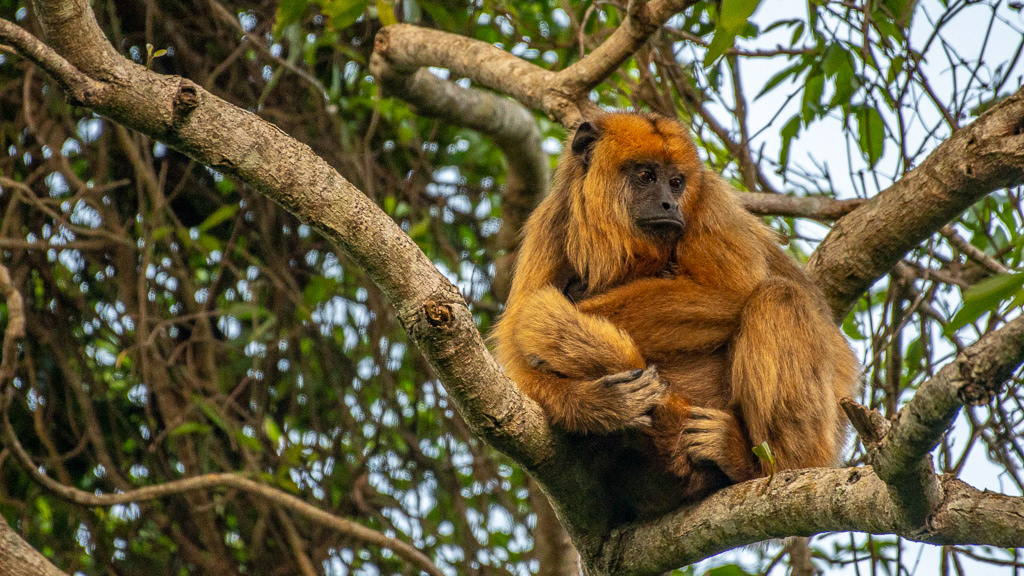As you traverse the captivating landscapes of Argentina, a question often arises among curious travelers: Are there monkeys in Argentina? This whimsical inquiry invites you to delve into the vibrant tapestry of Argentine wildlife and recognize the fascinating creatures that inhabit this diverse country. While the Southern Cone might not be renowned for its primate population like some of its tropical counterparts, Argentina does indeed boast a remarkable variety of monkey species. This exploration of Argentina’s jungle and subtropical regions will unveil the wonders of its wildlife, specifically the enchanting primates that inhabit these lush locales.
At the heart of Argentina’s monkey scene is the rich biosphere found within the country’s northern rainforests. In regions like Misiones, particularly within the confines of Iguazu National Park, jungle trails weave through thick foliage, offering glimpses of several monkey species. One can often encounter the agile and endearing Howler monkeys, known for their distinctive, resonant vocalizations that can be heard reverberating through the treetops. With their long, prehensile tails and expressive faces, these monkeys are captivating as they swing among the branches, embodying the essence of the wild in a way that engages every nature enthusiast.
The presence of monkeys in Argentina serves as a window into the broader ecological web that supports various species in this vibrant ecosystem. While many visitors may focus on the stunning waterfalls of Iguazu or the remarkable biodiversity present at the foothills of the Andes, the monkeys contribute significantly to the health of their environment. Their fruit-based diet enables them to act as essential seed dispersers, thus promoting forest regeneration. This intricate relationship underscores the interconnectedness of species within these ecosystems, revealing the importance of preserving such habitats.
Furthermore, the Capuchin monkeys also grace the forests of Argentina, bringing with them an intriguing charm that captivates onlookers. These small, intelligent primates have an undeniable flair for curiosity, often showcasing behaviors that hint at their playful personalities. Observing their interactions can provide insight into the social structures and dynamics of primates, making encounters with Capuchins both educational and exhilarating. As they forage for food or engage in playful antics with each other, they serve as ambassadors of their species, sparking a deeper interest in the ecological values they represent.
It’s not just the appearance of these magnificent creatures that draws admiration; it’s the stories and cultural significance surrounding them as well. For indigenous communities, monkeys often play a part in mythology and folklore, enriching the cultural landscape of Argentina. This enduring connection highlights the need for conservation efforts, as protecting these extraordinary animals also preserves the rich narratives that have evolved around them. Tourists who seek to engage with local communities can discover how traditions intertwine with nature, gaining a more profound appreciation for the wildlife they encounter.
Additionally, other regions of Argentina contribute to the rich primate landscape. The Yunga forest biome, spanning the northwestern provinces, features less common species such as the Black howler monkey. These relatively elusive creatures thrive in the dense and rugged terrain, reminding us that Argentina’s wealth of wildlife is often hidden just beyond the beaten path. Bird watchers, hikers, and wildlife enthusiasts alike should consider venturing into the remoter areas to observe the unique ecosystems where these monkeys thrive.
It’s essential to note the ongoing struggles faced by these species. Habitat destruction, often spurred by agricultural expansion and urbanization, poses a significant threat to the future of Argentine monkeys. Consequently, many conservation organizations are working diligently to protect these habitats and the monkeys that inhabit them. Awareness and education play a crucial role here. Each visit to an eco-friendly lodge or participation in guided tours not only promises enchanting wildlife sightings but also contributes to the conservation efforts that support both primates and their environments.
When planning a pilgrimage to witness these fascinating creatures, timing and preparation play pivotal roles. Early mornings often prove to be the most fruitful; monkeys are most active during these tranquil hours. Lush green canopies against the golden dawn light create an ethereal experience, enhancing the beauty of wildlife watching. Bringing along a camera with a zoom lens can capture not only the monkeys but also the breathtaking landscapes they inhabit, allowing for cherished memories that last long after leaving Argentina.
Ultimately, the inquiry of whether there are monkeys in Argentina opens a vast realm of exploration and respect for wildlife. From the enchanting Howler monkeys to the enigmatic Capuchin monkeys, these creatures firmly establish their place within Argentina’s ecological heritage. Engaging with them fosters a sense of connection to the natural world, urging us to protect these habitats for generations to come. So, pack your bags, embrace the wanderlust, and add a touch of primate-watching to your Argentine adventure! Whether it’s the resonant howls echoing through the rainforests or the playful Capuchins swinging through the trees, the joyous symphony of monkeys awaits your discovery in this magnificent South American land.
